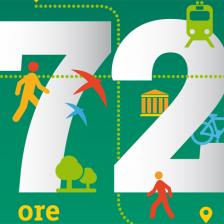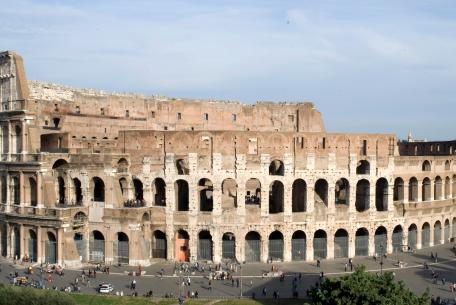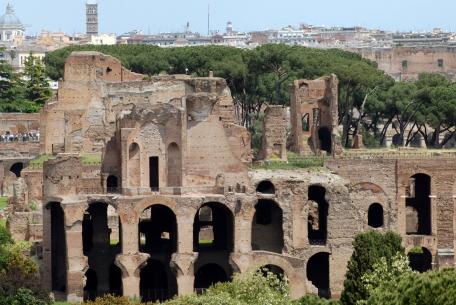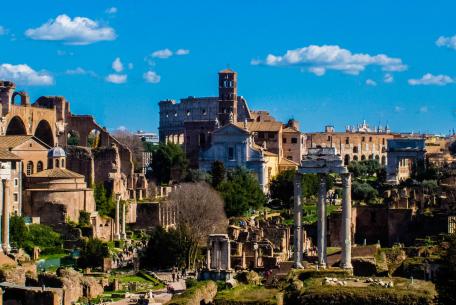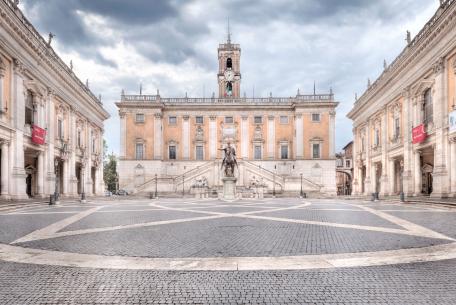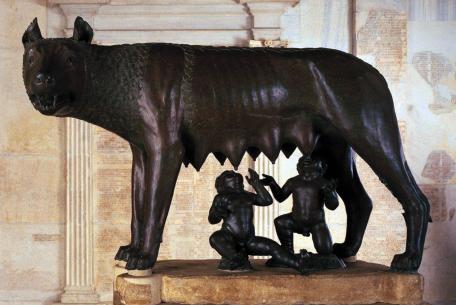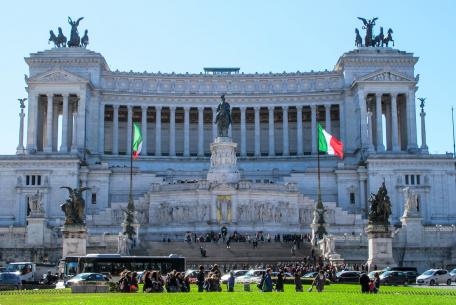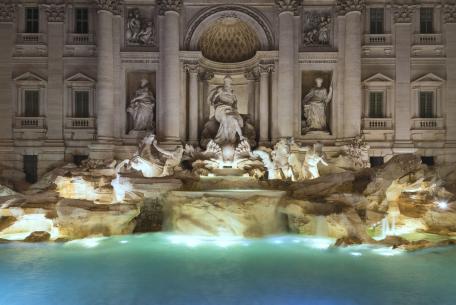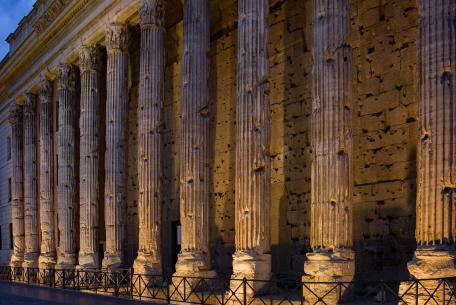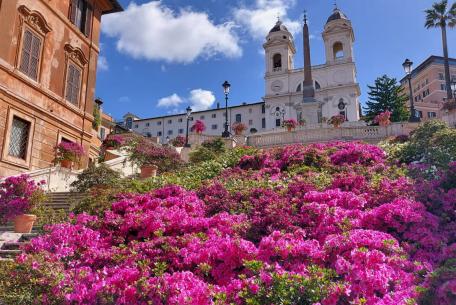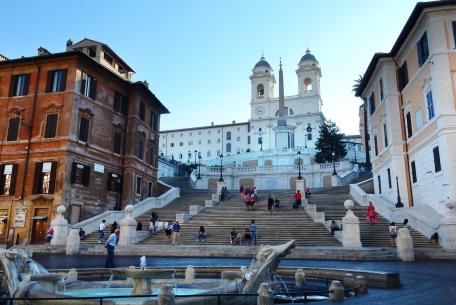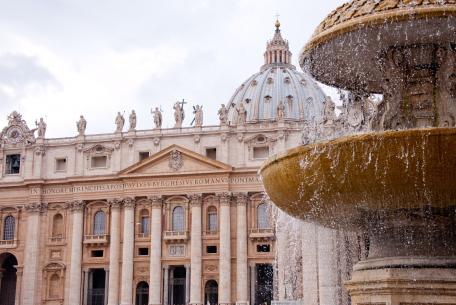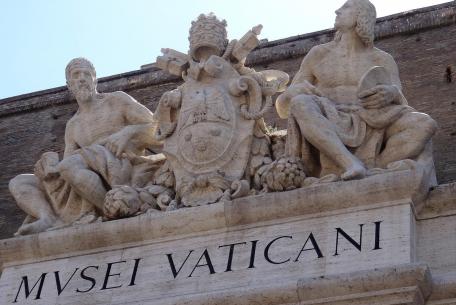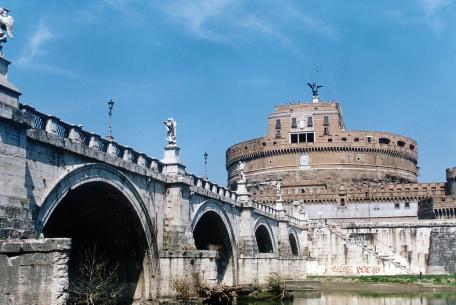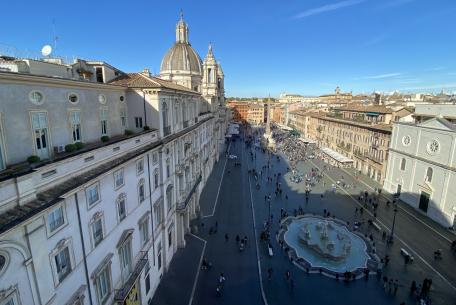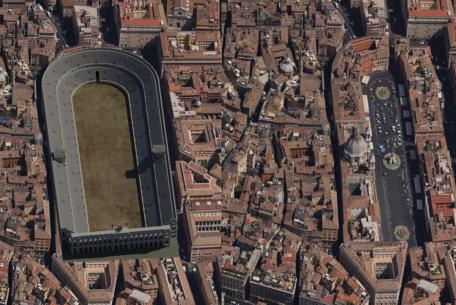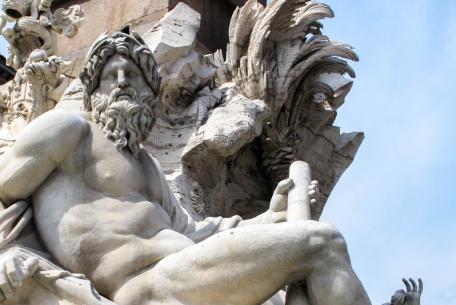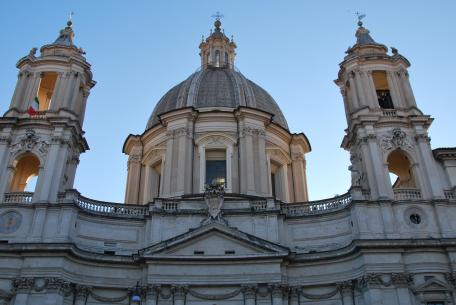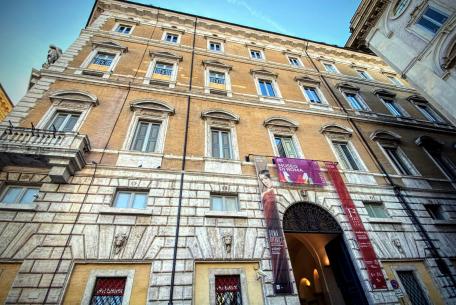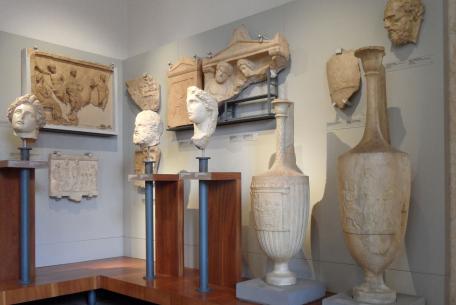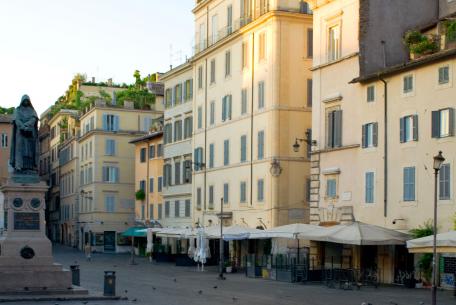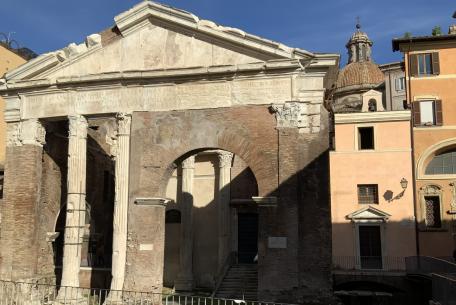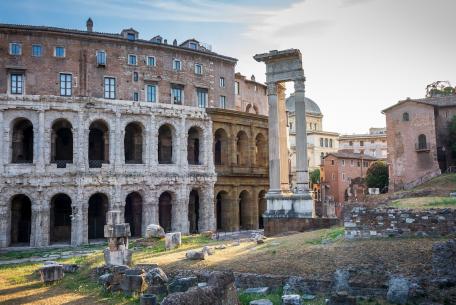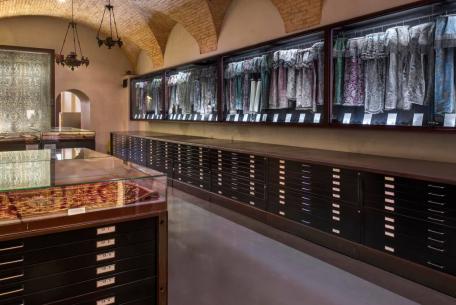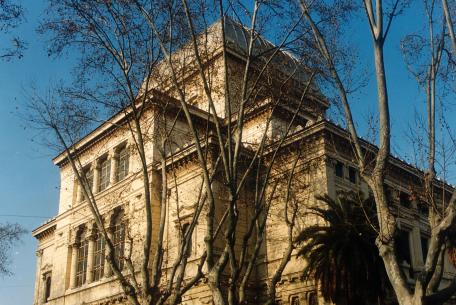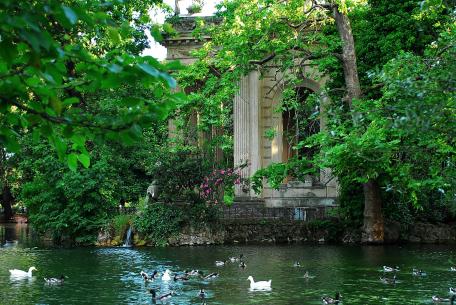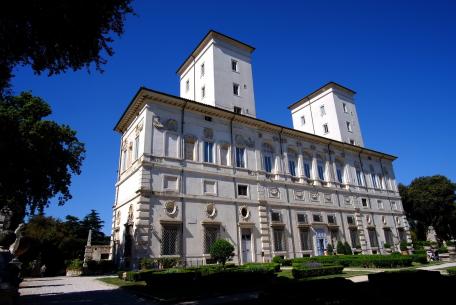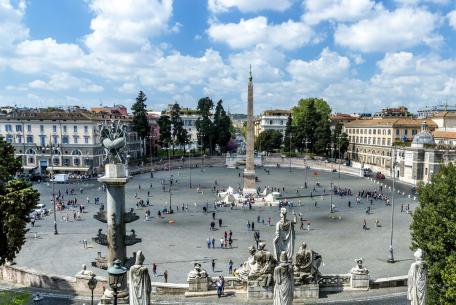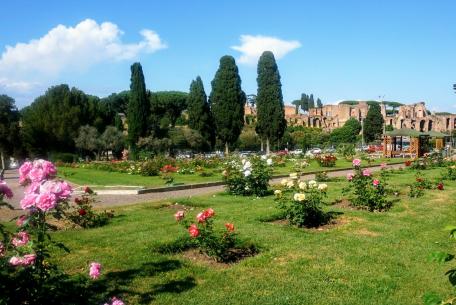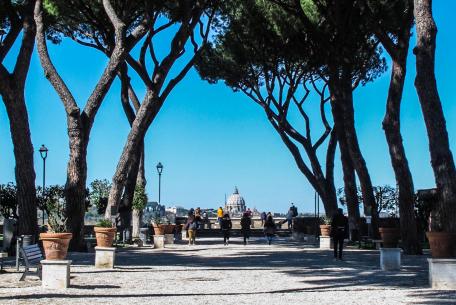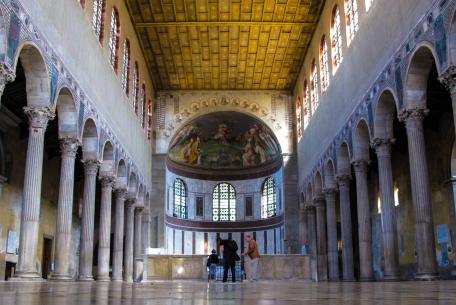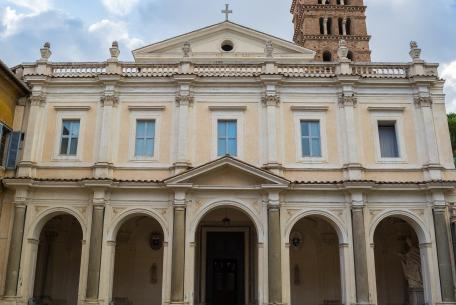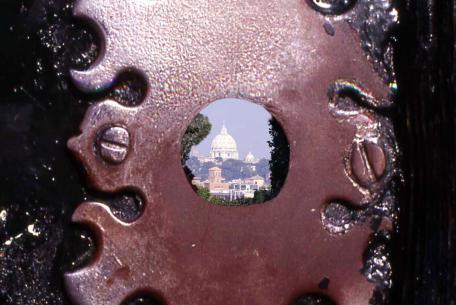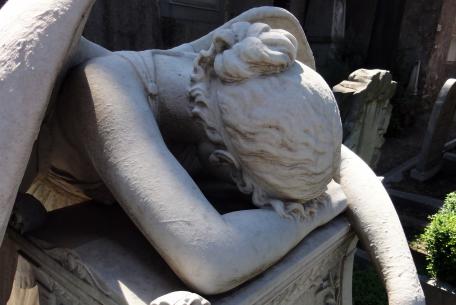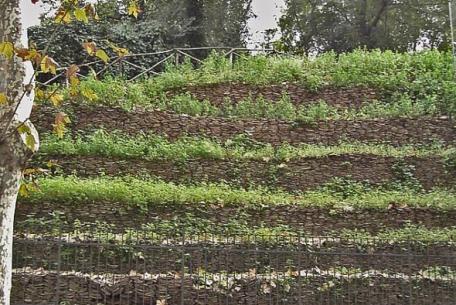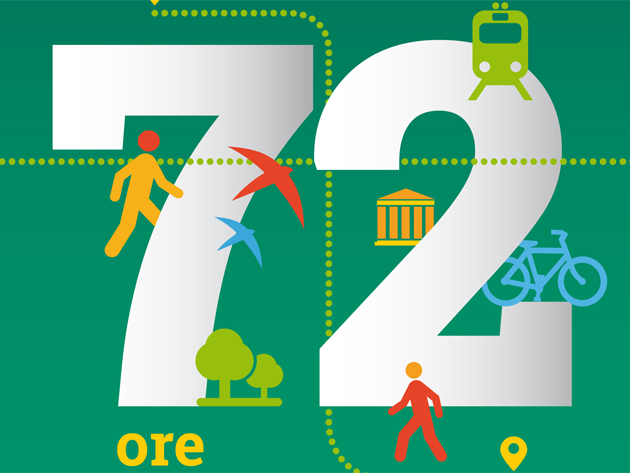
The itineraries you will find here are targeted at people visiting Rome in three days.
The Roma Pass will allow you unlimited runs on the city’s public transport and discounts in museums and events.
DAY 1 - The best of Rome. From the splendours of ancient Rome to the great squares and fountains of the city
The itinerary begins with the antique city’s most famous and magnificent monument, Colosseum, once known as Anfiteatro Flavio. It could host between 60 and 80 thousand people as a modern stadium and was 50 mt. high, however it was only used for a little more than 4 centuries. If you whish to visit its undergrounds and the third ring, from where you will admire a stunning view, please call 06 39967700 – coopculture.it for information and reservation.
You may go on with your visit of the archaeological area by starting with Palatine Hill where Caesar’s Palace relics still remain impressively facing Circus Maximus and you may continue with the Forum valley.
Once you have ended your visit you may start strolling along via Cavour and immerse yourself into the historical ancient popular borough Rione Monti.
After this break you can take via dei Fori Imperiali again and walk up Capitoline Hill to fully enjoy an unique view of the Roman Forum and the scenographic square designed by Michelangelo.
Capitoline Museums as well would deserve a visit. As soon as you go down Capitoline Stairs you will discover Piazza Venezia with its huge white monument Altare della Patria and Palazzo Venezia from XV century.
Walking on along Via del Corso and turning on the right on Via delle Muratte Trevi Fountain, designed by Nicola Salvi in the XVIII century, will open before your very eyes with all its splendour in few minutes. Never forget to throw a coin in the pool! This will bring you good luck and will make you come back to Rome.
Walking back along Via delle Muratte and crossing Via del Corso you will reach Piazza di Pietra, with its towering columns, last remaining of the ancient temple dedicated to Emperor Adrian.
Walking down Via dei Pastini you will reach Piazza della Rotonda, a market square up to some decades ago, today always crowded with tourists and Romans sitting down for a coffee outdoors.
La rotonda (the round temple), this is the name Romans call the Pantheon with, amazing example of Roman building techniques, it was initially built to be a temple but later on was changed into a christian place of worship. Do not miss to visit it and to admire its world biggest dome built in concrete more than 2 thousand years ago.
After a coffee break or an ice-cream walking along towards Piazza Capranica you will reach the impressive Palazzo di Montecitorio, seat of the Chamber of Deputies, sided by Palazzo Chigi from the XVI century, today the Prime Minister’s seat.
At this point you will be facing Via del Corso, most important street for the shopping in Rome. Walking northwards you will meet some of the most famous and chic side streets to name some: Via della Vite, Via Frattina, Via dei Condotti where all the main fashion designers have their boutiques.
Right after going past the historic Caffè Greco, you will reach Piazza di Spagna dominated by its monumental stairs – Spanish Steps – leading to the church of Trinità dei Monti. In the middle of the square you will admire a unique XVII century fountain that the Romans call La Barcaccia as it looks like a boat about to sink.
If you like to have dinner in this area, you will have plenty of choice from the luxury hotel restaurants to the most popular trattorias and pizzerias.
DAY 2 - Rome along the Tiber. From Vatican City to popular Rome
St. Peter’s Square in the early morning offers the possibility to fully enjoy its perfect architecture and the white travertine. The entrance to St Peter’s Basilica is free. The visit to the Treasure Museum and to the Dome are on payment. If you feel like climbing the stairs you will be rewarded by the spectacular view of the city. You may admire “la Pietà” by Michelangelo, the baroque Baldachin and Alexander VII’s funeral monument made by Bernini.
If you wish to visit the Sistine Chapel and to admire the amazing Vatican collections you have to go to the Vatican Museums (10 minutes walk from the Basilica). Reservation is suggested in order to avoid long lines.
The Castel Sant’Angelo is also a fascinating site you could visit within a walking distance from the Vatican. Before you go on with your visit do not miss to get up the terrace where you will surely enjoy a breathtaking view of Rome!
You may have a quick snack at the cosy café inside the Castle or you can get across Sant'Angelo Bridge to reach the left bank of the river where you will find lots of cafeterias, snack bars and restaurants in between Via dei Banchi Nuovi and Corso Vittorio Emanuele.
As you follow Via dei Coronari, with all its antique and vintage shops, you will quickly reach one of the most beautiful squares of the city: Piazza Navona.
Before you get into the square we suggest a stop at in Piazza di Tor Sanguigna and get a look at the Stadium of Domitian impressive ruins, underneath Piazza Navona. If you like you can also visit the archeological area on payment.
Piazza Navona’s unusual shape derives from this ancient Roman Stadium where horse and chariot races used to take place. In the middle of XVII century Pope Innocent X transformed it into his “private lounge”.
The Fountain of Four Rivers, masterfully built by Bernini, stands imposingly in the middle of the square surrounded by prestigious buildings. Among them, Palazzo Pamphilj (today seat of the Brasilian Embassy) and the church of Sant’Agnese in Agone, both built upon a Borromini’s project. Palazzo Braschi is on the opposite side of the square, today seat of Museo di Roma; crossing the inner courtyard you will find yourself straight on Corso Vittorio Emanuele and will reach Barracco Museum, today hosting ancient sculpture works.
As you will cross Corso Vittorio Emanuele you will go straight on and get to Campo de’ Fiori, the only historical square in Rome where there is no church. In fact, in the past this square was one of the places used for public executions.
The statue of Giordano Bruno the philosopher burned to death because of his ideas, stands in the middle of the square to remind us of him. Every morning you can buy fresh vegetables in the open air market and in the afternoon you can buy typical products and find ideas for souvenirs in the delicatessen shops and groceries around the square.
Just walking a little bit ahead you will find Piazza Farnese with its huge Palazzo Farnese, seat of the French Embassy. Go on to Via dei Giubbonari, cross via Arenula and go straight to the Ghetto.
You will discover that the Jewish tradition is still deeply alive among ancient relics as the Portico of Ottavia and Theatre of Marcellus, palaces and fountains. Bakeries, cake shops and kosher restaurants are passed on from fathers to sons. Jewish Museum and the Synagogue will complete your visit.
Your day is about to end. Cross the river through Pons Fabricius and reach the Tiber Island where once stood Esculapio’s temple, god of Medicine.
You are now in Trastevere, once a popular borough today famous for night life thanks to several clubs, discos, restaurants and trattorias.
DAY 3 - Art and nature. From the historical centre to the modern boroughs
Rome is full of green areas and Villa Borghese is one of the biggest parks in the city with its 80 hectares. It hosts various buildings, museums and a small lake. it is accessible from various entrances.
However if you wish to visit Borghese Gallery, the best access is Via di Porta Pinciana. Galleria Borghese museum hosts the most important sculptured groups by Gian Lorenzo Bernini such as the Rape of Proserpina, Apollo and Daphne and David, as wells as the famous Paolina Bonaparte by Antonio Canova. In the other sections you will find works of art by Tiziano, Raffaello, Domenichino, Correggio and a hall completely dedicated to the XVII century’s most famous painter Michelangelo Merisi, known as Caravaggio. The visit lasts about two hours and it is subject to the reservation hour.
After the visit you may enjoy a nice walk in the park while heading to Pincio’s Terrace where you will be caught by an amazing view of Rome. You may take the short path going down and get to Piazza del Popolo surrounded by three churches with the Fontana dei Leoni in the centre. At the south end of the square there are two elegant historic cafés, becoming, throughout the last century, famous gathering places for artists and writers.
Getting back to the subway (Metro Line A – Flaminio stop) and changing with Metro Line B you can stop at Circo Massimo where you can visit the ancient stadium built by Augustus for the chariot races. A small exhibition site was recently opened to better understand the history of this extraordinary archaeological site. Climbing up Aventino Hill you will find Roseto comunale, Rose Garden, particularly amazing in springtime. A little bit ahead is the Giardino degli Aranci (the Orange Garden) with its beautiful panoramic terrace overlooking the river; this is the perfect place for a break and for taking some souvenir photos.
Here you may visit many interesting churches such as Santa Sabina and Sant’Alessio to end up with the Military Order of Malta Complex where, stopping in front of their big door and getting a glimpse beyond the key hole you will have a breathtaking surprise! If you reserve in advance you will be welcomed by the staff for a visit discovering the garden and the church of Santa Maria del Priorato, the only work made by Giovan Battista Piranesi.
From here on, walking along viale Aventino you will get to another amazing monument: Piramide Cestia, an original imposing tomb - more than 36 metres high - built for the Praetor Caio Cestio in the I century B.C. The marble covering the Pyramid has come back to its ancient splendour after a long restoration. Today it is also possible tovisit the burial chamber inside.
Behind the Pyramid is the Non-Catholic Cemetery marked out of monumental tombs where many famous people are buried. Among them the English poet John Keats and his friend Percy Shelley as well as Antonio Gramsci.
In a very short time you can reach Rione Testaccio and you will see a little hill called Monte de’ Cocci literally meaning The mount of shards; indeed this is an artificial hillcock made up of pottery fragments collected during the ancient time. From the latin word ‘testae’ (shards) derives Testaccio, so the modern name of the area. The borough is also full of restaurants and pizzerias and hosts a rich street market where you can buy fresh products and taste the specialities of ‘roman street food’. This is also the perfect place for an exciting after-dinner as it is plenty of discos, live music places, pubs and wine bars.
Roma Pass - Rome's touristic official card
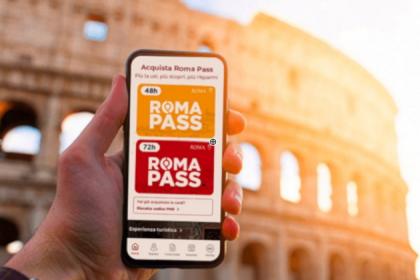
 Condividi
Condividi












































